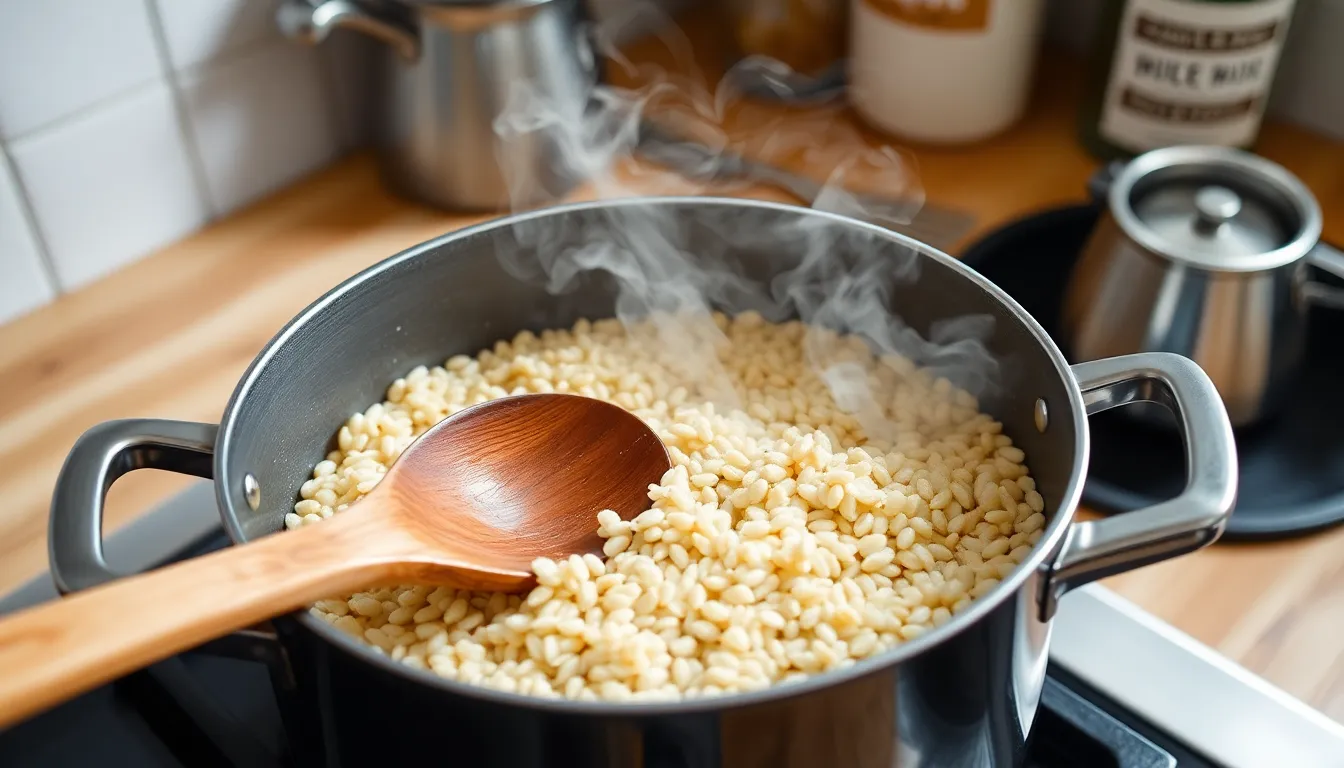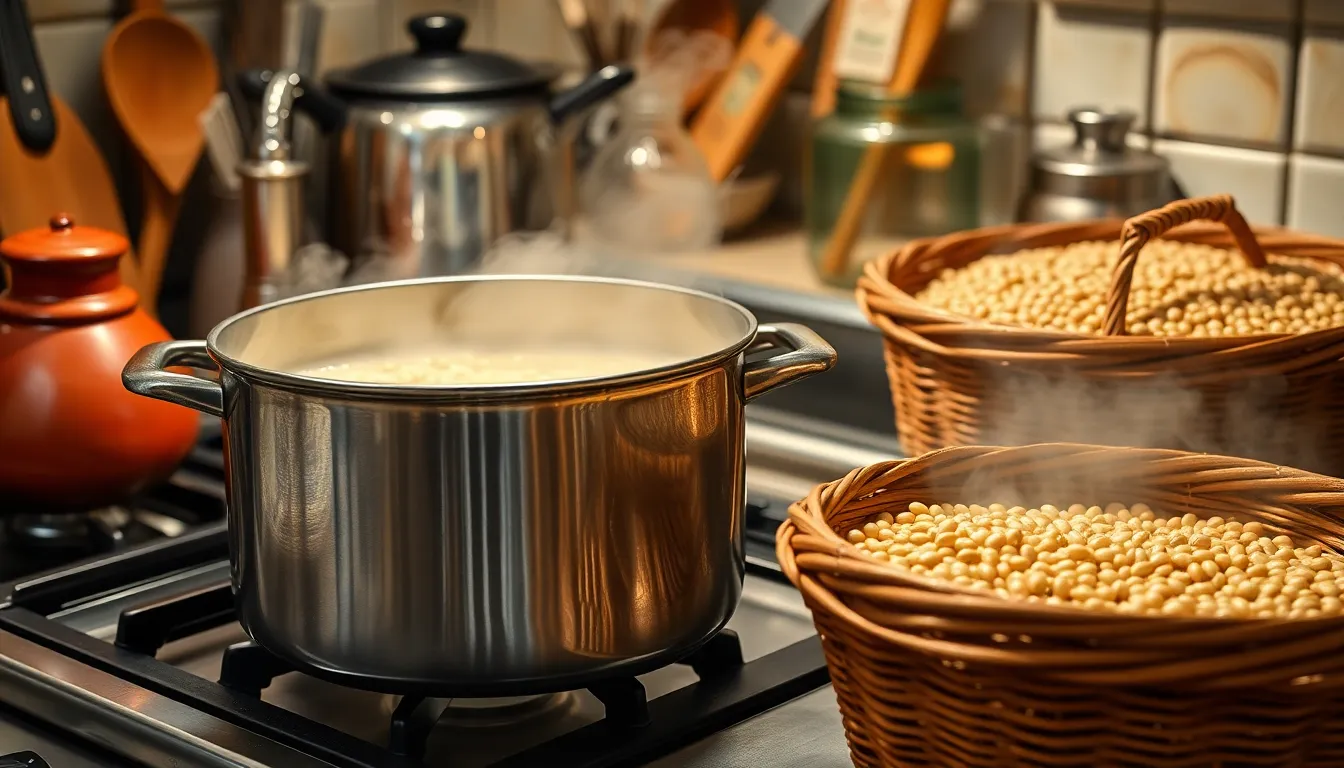Barley might not be the star of the show, but it deserves a standing ovation in the kitchen. This humble grain packs a punch with its nutty flavor and chewy texture, making it a fantastic choice for everything from hearty soups to delightful salads. If you think cooking barley is as tricky as solving a Rubik’s Cube blindfolded, think again!
Table of Contents
ToggleUnderstanding Barley
Barley is a versatile grain known for its nutty flavor and chewy texture. Chefs use it in a variety of dishes, making it a staple in many kitchens.
Types of Barley
Barley comes in several forms, primarily hulled barley, pearl barley, and flaked barley. Hulled barley retains its bran layer, offering a chewy texture and longer cooking time. Pearl barley undergoes polishing, making it quicker to cook but less nutritious. Flaked barley serves as an easy-to-use ingredient for cereals and baked goods, providing a unique texture and flavor. Each type has its uses, appealing to different culinary needs.
Nutritional Benefits
Barley is rich in dietary fiber, promoting digestive health. A one-cup serving of cooked barley contains about 6 grams of fiber. This grain also supplies essential nutrients, including vitamins B1 and B6, magnesium, and selenium. Compared to other grains, barley ranks high in antioxidants. Eating barley may help lower cholesterol levels and stabilize blood sugar. Its unique nutrients support heart health and overall well-being, making it a valuable addition to any diet.
Basic Barley Cooking Techniques


Barley offers a range of cooking techniques that enhance its flavor and texture, adding variety to countless dishes. Two primary methods include boiling and steaming, both effective in preparing this nutritious grain.
Boiling Barley
Boiling serves as the most common technique for cooking barley. Start by rinsing the grains under cold water to remove any debris. Combine one cup of barley with three cups of water or broth in a pot. Bring the mixture to a boil, then reduce the heat and let it simmer for 30 to 45 minutes. Hulled barley requires more time than pearl barley, so cooking duration may vary. Test for tenderness; the barley should be chewy but not mushy. Drain any excess liquid after cooking if necessary.
Steaming Barley
Steaming provides a gentle cooking method, preserving nutrients. First, soak the barley in water for at least four hours to soften it. After soaking, place the barley in a steamer basket lined with cheesecloth, ensuring the grains do not fall through. Add water to the steaming pot and cover it. Steam for 40 to 50 minutes, checking periodically for doneness. Once the barley is tender, remove it from the heat and let it rest for a few minutes before serving. This technique works particularly well for incorporating barley into salads or as a side dish.
Advanced Barley Cooking Techniques
Exploring advanced techniques can elevate barley dishes significantly. Various methods enhance flavor and texture, making barley even more versatile.
Toasting Barley
Toasting barley enriches its nutty flavor. Begin by rinsing the barley to remove any impurities. Dry the grains in a pan over medium heat for about 5 to 10 minutes, stirring frequently to prevent burning. The grains will turn golden brown and release a fragrant aroma during this process. This technique is ideal for adding depth to soups, salads, or grain bowls. The toastiness complements other ingredients, providing a delightful contrast.
Using Barley in Risotto
Barley serves as a hearty alternative in risotto. Select pearled barley for its quicker cooking time and creamy texture. Start by sautéing garlic and onions in olive oil, then add the barley to toast it slightly. Gradually incorporate vegetable or chicken stock, stirring frequently for about 30 to 40 minutes. The barley absorbs the liquid, creating a rich, comforting dish. Finish with Parmesan cheese or fresh herbs to enhance the flavor, making this risotto both nutritious and satisfying.
Creative Barley Recipes
Barley’s versatility lends itself to numerous creative recipes. It enhances various dishes, providing hearty textures and essential nutrients.
Salads Featuring Barley
Salads with barley showcase a delightful combination of flavors and textures. Combining cooked pearl barley with fresh vegetables, such as cucumbers, tomatoes, and bell peppers, creates a vibrant dish. Adding herbs like parsley or mint elevates flavors further. Squeezing lemon juice over the mixture brings a refreshing tang. Incorporating nuts or seeds, such as sunflower seeds or walnuts, adds a satisfying crunch. Consider drizzling a light vinaigrette to complement the nutty taste of barley. This kind of salad serves well as a side or a main dish, making it perfect for lunch or dinner.
Soups and Stews with Barley
Soups and stews benefit immensely from the inclusion of barley. Opt for a hearty vegetable soup and add hulled barley for a chewy texture and nutritious boost. Starting with a broth base, including carrots, celery, and onions, creates a flavorful foundation. Stir in barley and allow it to simmer until tender. For a protein-packed option, consider adding beans or lentils to further enhance the dish. Combining spices like thyme or bay leaves enriches aromas as the soup cooks. Barley in stew provides a soothing comfort food option, ideal for cold weather.




